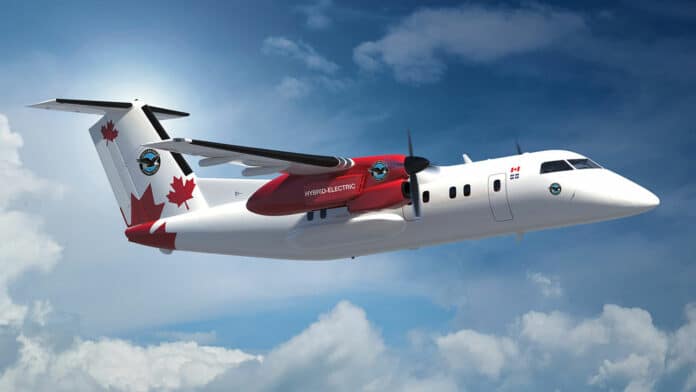Pratt & Whitney Canada, in collaboration with the National Research Council of Canada (NRC) and the Innovative Vehicle Institute (IVI), announced the development of an advanced mobile charging unit (MCU).
Developed as part of the RTX hybrid-electric flight demonstrator project, the mobile charging unit is designed to charge high-power batteries at an impressive 1500 volts, making it compatible with Megawatt Charging System standards in the aviation industry. It’s a significant step towards high-voltage power applications.
Assembled from commercially available components, the MCU boasts a power delivery capacity of up to 280 kW and 1500 volts. Pratt & Whitney Canada collaborated with IVI to develop a distributed control and protection strategy that enhances the MCU’s operational efficiency.
The NRC played a pivotal role in the project, focusing on the hardware design, assembly, testing, and delivery of two charger units that will be used in the hybrid-electric flight demonstrator project. The charger’s bidirectional capability allows it to charge and discharge batteries, creating opportunities to recycle unused energy back into the electrical grid.
“This is the latest example of our hybrid-electric flight demonstrator project, driving collaboration and innovation within Canada’s aerospace ecosystem to enable a more sustainable future for aviation,” said Alexandre Gagnon, vice president of corporate affairs, Pratt & Whitney Canada. “High voltage, bidirectional charging systems will be critical for a growing number of electric and hybrid-electric systems including aircraft, as well as other transport applications.”
Pratt & Whitney Canada is making progress in testing the propulsion system for the RTX hybrid-electric demonstrator. They’re targeting a 30% improvement in fuel efficiency and reduced CO2 emissions compared to today’s most advanced regional turboprops. In 2024, the propulsion system will integrate with batteries developed by H55 S.A., which will be charged using the new charger.
The hybrid-electric propulsion is being developed as a critical component of RTX’s strategy for enabling more sustainable aviation and supporting the industry’s goal of reaching net-zero CO2 emissions by 2050. It shows Pratt & Whitney Canada’s commitment to shaping a sustainable aviation landscape.
